5 Kitchen Vents You Should Never Buy (And Why)
September 6th, 2024 | 7 min. read

Most of the hoods you're considering can't properly vent the stove you own.
I know that sounds odd, but in this article, I'll teach you how to ensure your home is ventilated correctly.
By the end, you'll know the four vent hoods you should never buy—some of which we sell at Yale, regrettably.
This brings up a very good question:
Why do we (and other appliance stores) sell poor venting hoods?
First, many of these hoods are designed for kitchen plans made by people who haven’t read this blog or others like it.
Once the cabinets are ordered, we can't change the specifications.
Pro tip: You should buy appliances first, then the cabinets.
But I digress.
The second reason is price.
Over-the-range microwaves are incredibly cheap these days. Replacing one with a decent vent and separate microwave can cost $500 or more.
Lastly, let’s say you have an existing downdraft. If it breaks, you have two choices: buy another downdraft or remodel your kitchen.
I would never tell someone to spend $20-30,000+ on a new kitchen unless they really wanted to.
A bad vent is better than no vent at all.
Ultimately, I’ll show you a few ways to mitigate a bad venting situation in your home.
The Table of Contents
Table of Contents
The Chemistry Set That Is Your Kitchen & the Bad Air It Causes
New gas ranges now have double the output compared to what we sold when I started in 1986.
That’s right.
My mom’s old Caloric high-low range had an 8,000 BTU max burner. This BlueStar has a 25,000 BTU max, plus two 22,000 BTU burners:
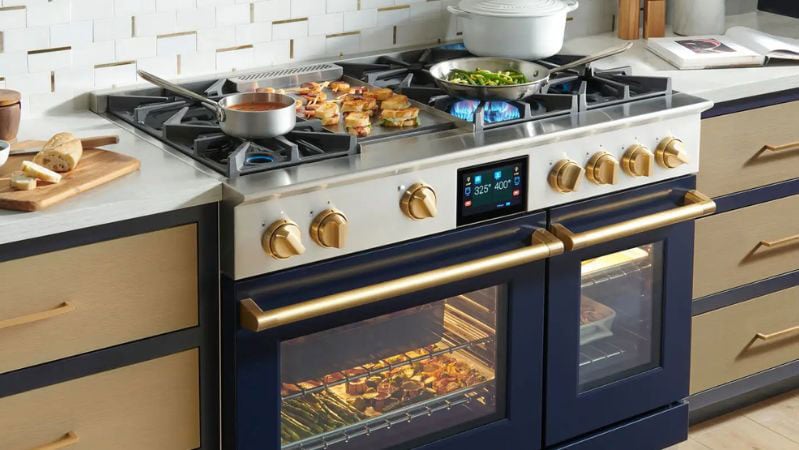
That might be an extreme example.
But what about a basic Whirlpool range with two 15,000 BTU burners?
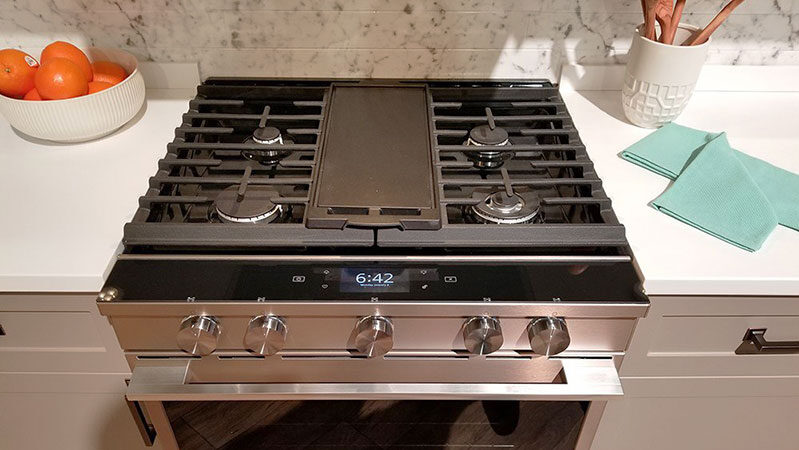
The high-output burners on these ranges are always front left and front right. If you measured, these burners would be about 22-23 inches deep from the wall.
This will be important later in the article.
So, ranges now have more power. If not vented properly, all that smoke and grease will stay in your kitchen—and that’s just part of the problem.
Harmful Compounds
Burning fats emits potentially harmful compounds like carbon dioxide, carbon monoxide, nitrogen dioxide, formaldehyde, and particulate matter (PMI).
My mom is a wonderful person, but her cooking left something to be desired. In our house, “well-done” was rare.
That said, we all grew up unaffected by our Caloric range, just like most people.
However, houses today are far more efficient than in the 1960s when my parents moved into our home in Needham.
Windows and other building materials are designed to keep the inside air in while keeping the outside air out.
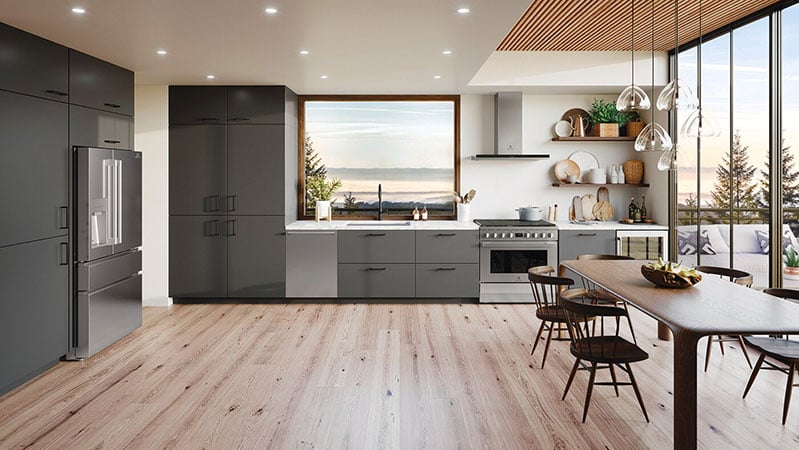
So all those compounds, along with grease and smoke, linger in your home longer.
You’ll read articles about how this can be harmful to seniors and infants, and how it can promote asthma. You’ll also find articles that say it won’t affect you.
Now, we even have gas bans, citing this as one of the reasons.
Rather than getting bogged down in articles, let’s focus on venting your frustrations—literally—outside your house, solving the problem for you and your family.
The good news? The fix is easy: just buy the right hood. Simple as that.
In this article, you’ll learn how.
How to Vent Your Kitchen Range, Especially if You Like to Cook
Proper ventilation can be broken down into four key parts.
CFM
First is CFM, or blower speed.
CFM stands for Cubic Feet Per Minute—literally, the amount of air cubes your motor expels every minute.
For example, a 600 CFM exhaust means 600 cubes of air are being exhausted per minute.
A 1200 CFM motor can exhaust the equivalent of a small room of air in a minute.
If you have a hood with 400 CFM or more, you'll need a “makeup” or air return system—this is required by law in Massachusetts, and it’s a good practice in any state.
I’ll explain how to handle make-up air later in this article.
Blowers can be placed anywhere: inside the hood, in the duct, or outside your home.
Many people fixate on how much CFM to buy, but that depends on how you cook and the output of your burners.
Do you cook with a wok, skillet, or grill? Then you’ll need a higher CFM because those cooking methods produce more heat and smoke.
For an all-burner 36-inch pro range, 600 CFM should be sufficient. If you have a grill or griddle on that range, go up to 900 CFM.
A 48-inch range will require 1200–1500 CFM, depending on how you cook.
Pro Tip: I recommend upgrading to larger blowers, which cost $200–500 more. Consider it if you use your cooktop often.
Capture Area
Next is the capture area.
The capture area refers to the size of the vent, and it’s something all the bad vents we’ll discuss later lack.
Here’s why:
The front burners you cook on are roughly 22–23 inches from the wall, but most vents are only 16–20 inches deep.
So, even with a higher CFM, air will billow past your hood and into your home.
When you stir-fry, grill, or even burn food on your cooktop, smoke isn’t immediately evacuated. The hood captures it, then the motor extracts the air outside your home.
Duct Run
Short duct runs are the most effective—either straight up and out or straight back. Longer duct runs are less efficient, especially with elbows or transitions.

Think about trying to drink through a straw that’s bent in a few places. It’s not so easy, right?
That’s another reason your cooking appliance should be against a wall, not on an island—venting is much easier.
Duct Size
Use the right size duct.
In my early days as a salesperson, I talked to a contractor about proper duct sizes while he pretended to listen.
After installation, I was called back because the ranges weren’t venting properly.
Turns out, they used smaller dryer ducts made of plastic instead of metal, which is not only ineffective but dangerous.
Ducts should be between 6 and 10 inches in diameter, depending on the size of your hood.
They should also be rigid metal, not flexible, to prevent grease from accumulating in the joints, which could become a fire hazard.
Learn More: Ventilation Buying Guide
5 Kitchen Vents You Should Never Buy (And Why)
Let's look at how NOT to vent.
We’ll show you five hoods that you must cross off your list for fresher air. I’ll give you alternatives as well.
Downdrafts
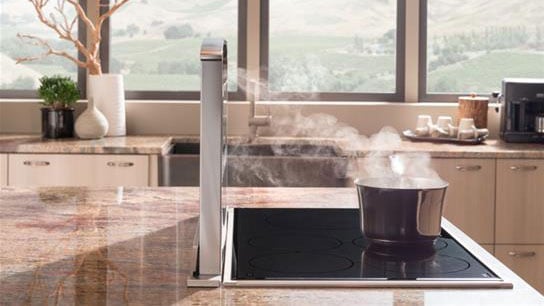
Place a downdraft on your island, and it’ll look pretty. You can entertain your guests while cooking.
Get a big skillet. Be your own Hibachi chef.
Except, it won’t effectively remove any of that smoke or grease.
Note: Next time you’re at a Hibachi restaurant, look up and check out the huge hoods over each station. By the way, I’m a regular at Fuji in Needham. My daughter and her friend love it.
Downdrafts have no capture area and reverse the airflow.
If you burn something, it will be barely evacuated through that 3-inch aperture. Plus, downdrafts also have long duct runs with at least one transition, reversing the airflow.
You’ll be cooking on the front burners while the vent is behind the cooktop.
Better Venting Ideas Than Downdrafts
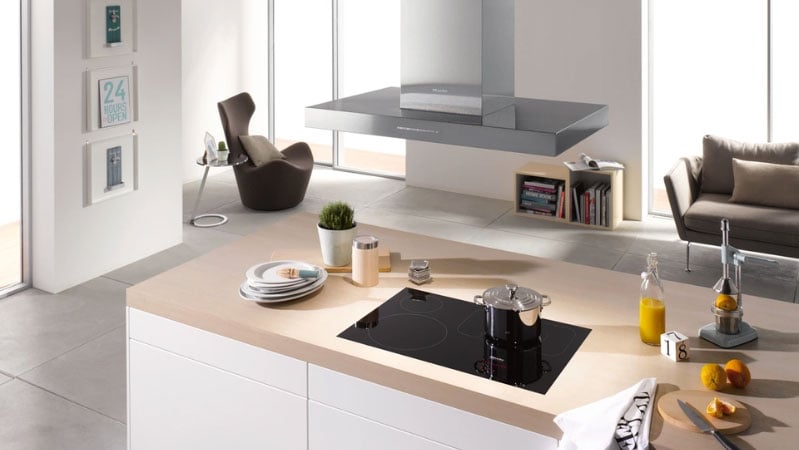
If you need to place your cooking on an island, buy an overhead hood to vent properly. Or, place your cooking against a wall where it’ll be vented more easily.
You can always place an entertainment sink on the island instead—sinks are better on islands anyway, since they’re the most-used appliance.
Slide-Out Hoods

Why are these being marketed as "high-end"?
They should’ve been discontinued in the 1980s.
A slide-out hood is just a piece of glass sliding out from your top cabinet. That piece of glass doesn’t cover the burners or provide any capture area for heat, grease, or smoke.
Plus, you lose the cabinet space above it because of the blower—so it’s dated and inefficient.
Better Venting Alternatives to Slide-Out Hoods

Ventilation Hoods. Real ones. Pick one with the appropriate amount of CFM and that’s 22-23 inches deep.
Bonus: you’ll even save cabinet space.
The Over-the-Range Microwave

The over-the-range microwave was my favorite appliance back when it was introduced in the early 1990s.
However, it’s only 16 inches deep with 350 CFM.
This will not effectively vent your front burners, which are 22-23 inches away from the wall and pump out 15,000–25,000 BTUs.
I had an over-the-range microwave in my apartment in Jamaica Plain last year.
Anything cooked on the front burners—even steam—just wafted right past that vent and into the room.
Over-the-Range Microwave Alternatives
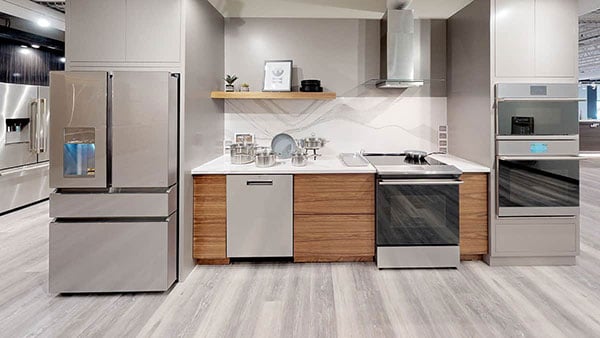
Place a 23-inch-deep hood over your range and put the microwave under the counter or on a countertop elsewhere.
Bonus: Ceiling Blowers
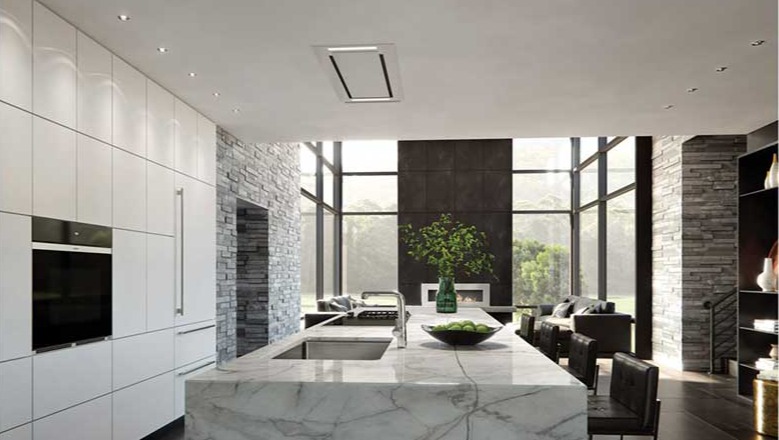
I’m wary of these for two reasons: there isn’t any capture area like a hood.
Many people place these on their impossibly tall ceilings, yet the directions specify 4–7 feet off the cooking surface.
All those compounds will just dissipate into your kitchen with those cathedral ceilings.
Another venting story: When I lived in Cambridge, the owner placed a Nutone bath vent over his Roper stove. The ceiling got pretty grimy.
Ceiling Venting Alternatives

In a similar refrain, buy an island hood or place your cooking against the wall.
Custom Wood Hoods (Some of Them)

Wood hoods are a great way to distinguish your kitchen from the sea of stainless steel.
By the way, a hood doesn’t have to be stainless steel. It can be wood, tile, or any other noncombustible material.
You still need the right lights, controls, filters, and appropriate CFM.
Many people buy lower CFM than they need, which is the first problem. The second problem is that the hood shell should also be 23 inches deep to vent the front burners effectively.
Many people have shells less than 23 inches deep, so they just don’t work.
If you’re considering a wood hood for design, the same rules apply: make the shell 23 inches deep and get the appropriate CFM blower.
Key Takeaways
Downdrafts, slide-out hoods, over-the-range microwaves, ceiling blowers, and some wood hoods all have the same problem: they’re too shallow or have inadequate CFM for those powerful front burners.
If you cook, just buy a 23-inch deep hood with decent CFM.
That simple.
What Do You Do With an Existing, Inadequate Hood?
I’m not suggesting you remodel if you’re moving into a house with, say, a downdraft. Instead, try these tips:
- Open the windows to get some fresh air.
- Cook on the back burners if possible.
- Turn your vent on before and after cooking.
- Consider switching to an induction or electric range instead of gas—both emit fewer harmful compounds.
Make-Up Air, Briefly
A 1200 CFM blower will exhaust a small room’s worth of air per minute.
You need make-up air—fresh air needs to return through your HVAC or from at least ten feet away from your range on the opposite side.

It’s the law in Massachusetts. Inspectors won’t give you an occupancy permit without it.
Let’s say you live in another state and think it’s governmental overreach and decide not to install makeup air. Well, air will still get made up.
But in this case, it’ll be from your furnace, attic, or garage.
Not exactly the healthiest air to breathe in, is it?
Read More: What Is Make-Up Air?
Lastly, Don’t Do This
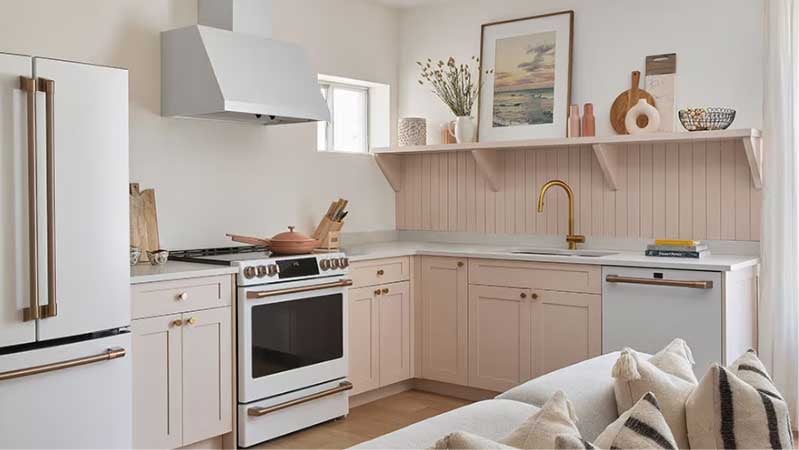
You bought the right hood, installed the proper duct, and placed it on the outside wall.
Then, you hang it way too high.
Additional Resources
Get the Yale Ventilation Buying Guide with features, specs, and inside tips for every brand and hood type. Well over 1 million people have read a Yale Guide.
Related Articles:
Why Should You Trust Us?
It seems that every appliance review has nothing but glowing comments about almost every product, yet you read customer reviews and they are almost universally bad.
We are here to fill in the disconnect. We'll give you the best features, and the drawbacks as well, including reliability based on over 37,000 calls performed by our service team just last year. Our goal is to give you ALL the information so you know what's right for you.
Please consider subscribing or adding to the conversation in the comments below. We appreciate you stopping by.
Steve Sheinkopf is the third-generation CEO of Yale Appliance and a lifelong Bostonian. He has over 38 years of experience in the appliance industry, and he is a trusted source of information for consumers on how to buy and repair appliances.
Steve has also been featured in numerous publications, including the
New York Times,
Consumer Reports,
The Boston Globe,
Bloomberg Radio, the
New York Post,
The Wall Street Journal, and
Entrepreneur, for his knowledge of how to buy appliances and appliance repair.
Steve is passionate about helping consumers find the best appliances for their needs, and he is always happy to answer questions and provide advice. He is a valuable resource for consumers who are looking for information on appliance buying, repair, and maintenance.
Despite being the worst goalie in history, Steve is a fan of the Bruins and college hockey, loves to read, and is a Peloton biker. The love of his life is his daughter, Sophie.
A Note About Pricing
Pricing on this blog is for reference only and may include time sensitive rebates. We make every attempt to provide accurate pricing at time of publishing. Please call the stores for most accurate price.

